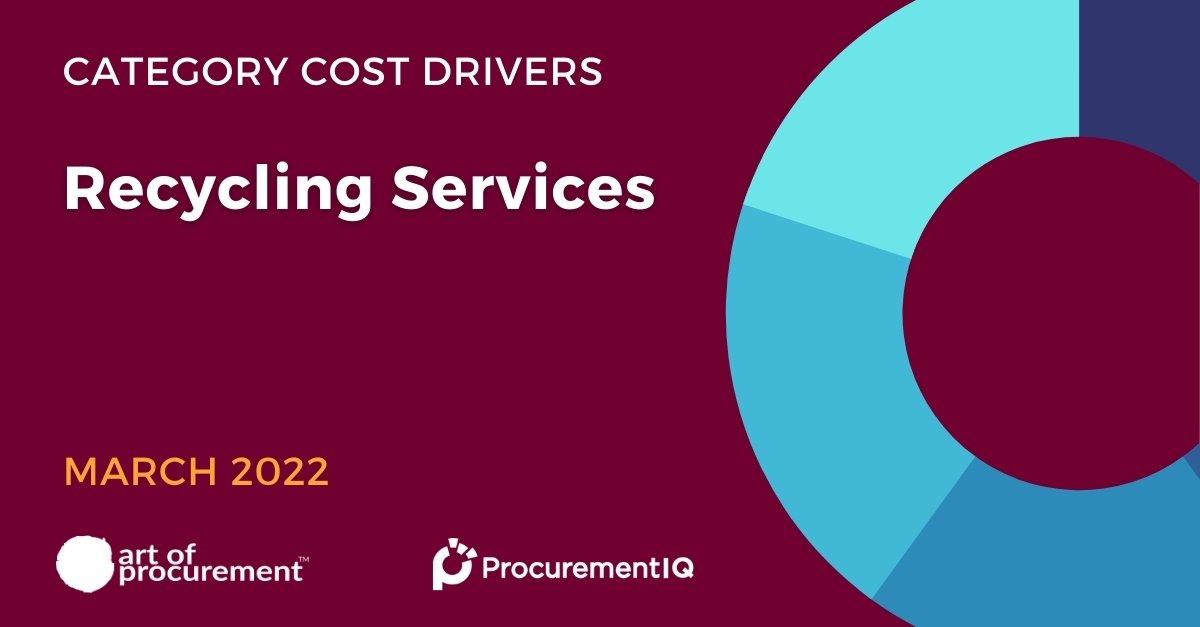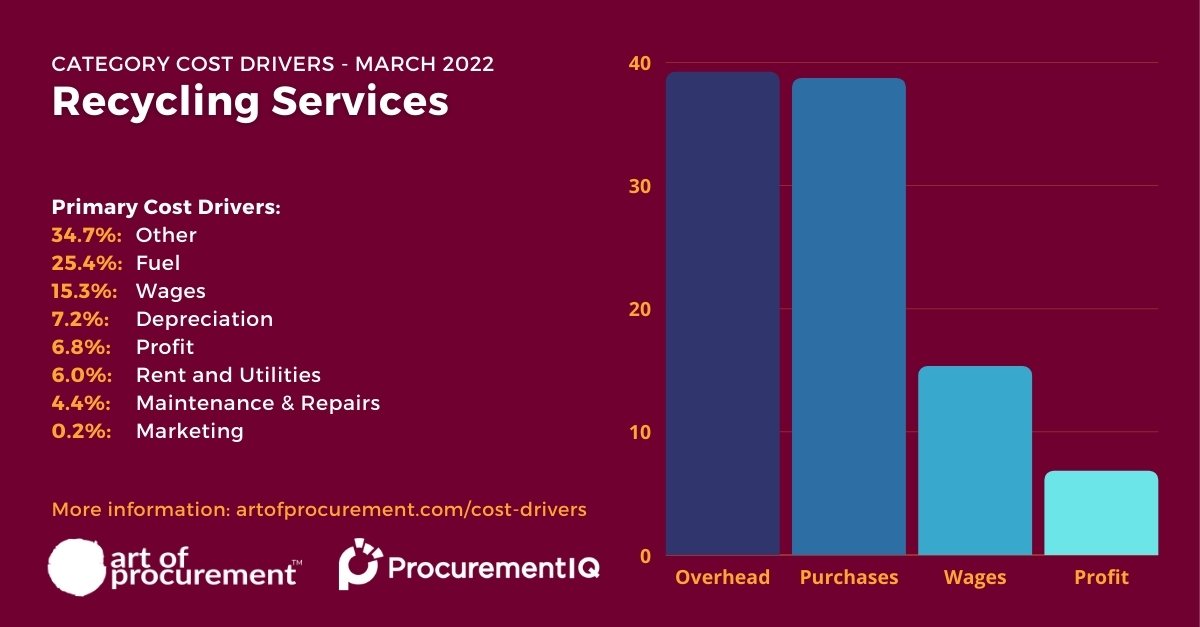
The AOP Category Cost Drivers Series is a new content offering created in partnership with ProcurementIQ.
Today we will uncover the primary cost drivers impacting recycling services.

The Numbers
The top cost driver for recycling services is fuel. At over 25%, the cost to arrive on location and make a pick-up is both high and volatile. As a result, some providers are adding fuel surcharges to their contracted pricing, passing this increase along to customers.
Although prices for recycling services are expected to rise over the next few years, volatility is expected to fall. As a location-based service, procurement does not usually have many options to choose from, but a return to stable conditions around fuel and labor availability should ease the strain on the negotiation process.
Where possible, procurement should monitor how each supplier manages fuel-driven cost increases and if/when they are rolled back. This will help identify high-performing suppliers and flag the opportunity to reach out to other suppliers about rolling their increases and surcharges back.
How to Use this Information
Although the prices paid by procurement are affected by general supply and demand, supplier cost drivers are an important data source. They not only provide procurement with insight into how large or small the savings opportunity is likely to be, they also illustrate the relative efficiency of each prospective supplier’s operation. Procurement can request this information in an RFP and benchmark against their responses, as well as using it as a point of discussion in subsequent negotiations. Once a contract is in place, procurement can track the underlying input costs to support cost reduction negotiations or to understand the validity of supplier cost increase requests and respond appropriately.
Dig Deeper
We have partnered with ProcurementIQ to dig into their treasure trove category intelligence reports, with new insights every Friday. To dig deeper into recycling services and over 1,000 other indirect spend categories, visit procurementiq.com.




